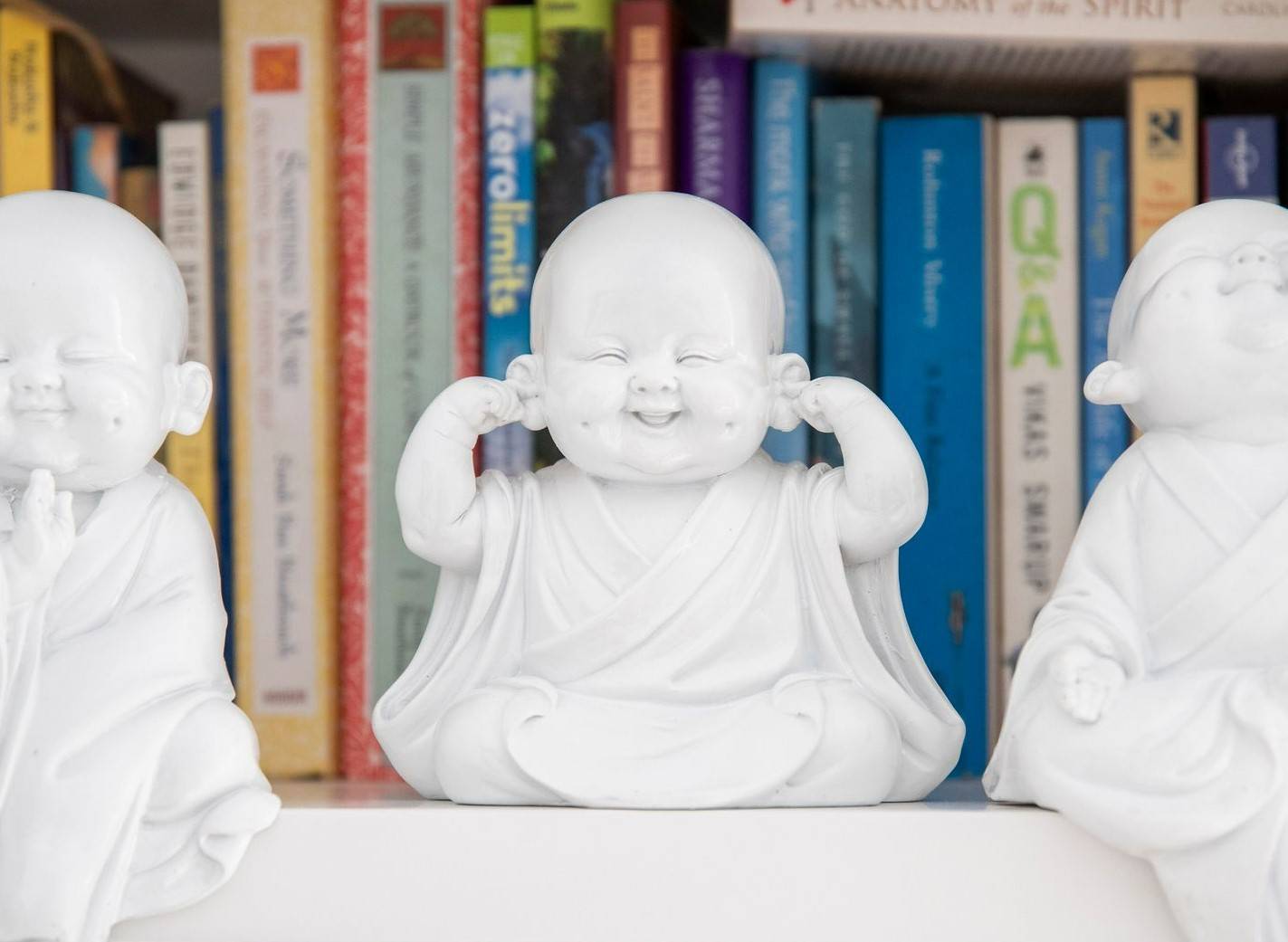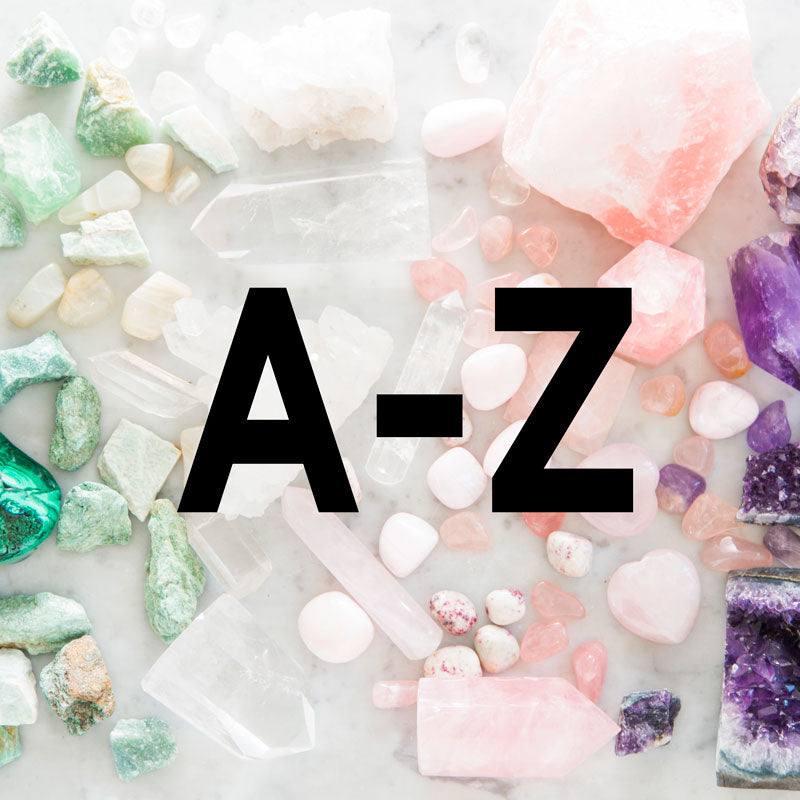Buddha & the Story of Enlightenment
The history of Buddhism is the story of one man’s spiritual journey to enlightenment and the teachings and ways of living that developed from it. During the 5th Century BCE, Siddhartha Gautama was born into royalty and soon realised that living a conditioned life was not going to bring eternal happiness or protection from suffering. Siddhartha decided to abandon his royal duties and begin a quest for enlightenment.
After many years of practising meditation, one day seated beneath the Bodhi tree (the tree of awakening) Siddhartha became deeply absorbed in meditation, reflecting on his experience of life and seeking its truth – conquered much fear and temptation and reached enlightenment.
By finding the path to Enlightenment, Siddhartha was led from the pain of suffering and towards the path of Enlightenment, becoming known as the Buddha or 'The Awakened One' and has been signified by Buddha statues for centuries.
More than a physical representation of Buddha, each pose (Asana or Attitude), posture and hand gesture (Mudra) have a special significance in Buddha’s journey to enlightenment.
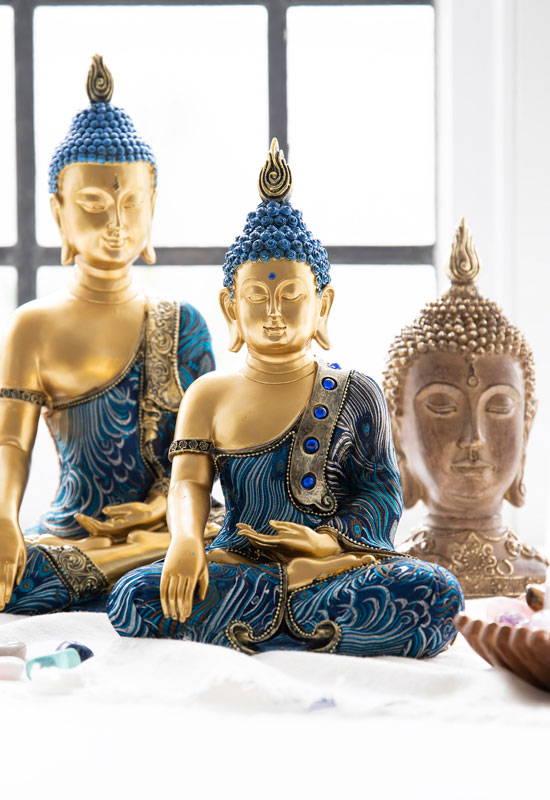
buddha Poses & Meaning
Buddha resting head on knee
Depicting Buddha as he sits with his head resting on his knee, this statue represents the inner peace and serenity that can be found on the journey of enlightenment. This pose, or Asana, signifies the sense of calm of tranquillity we can achieve though meditation as demonstrated by Buddha as he meditated under the Bodhi tree on his path to enlightenment.
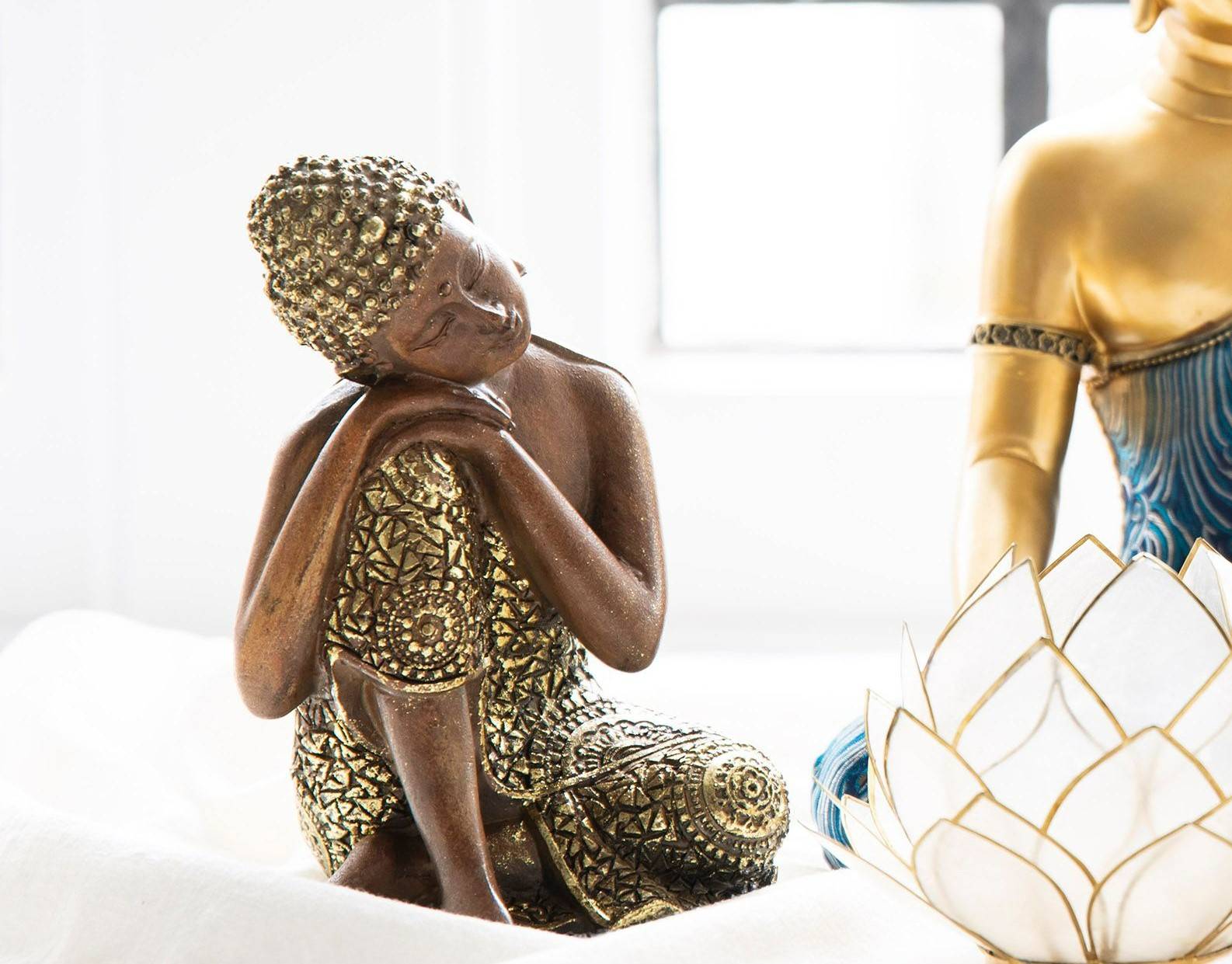
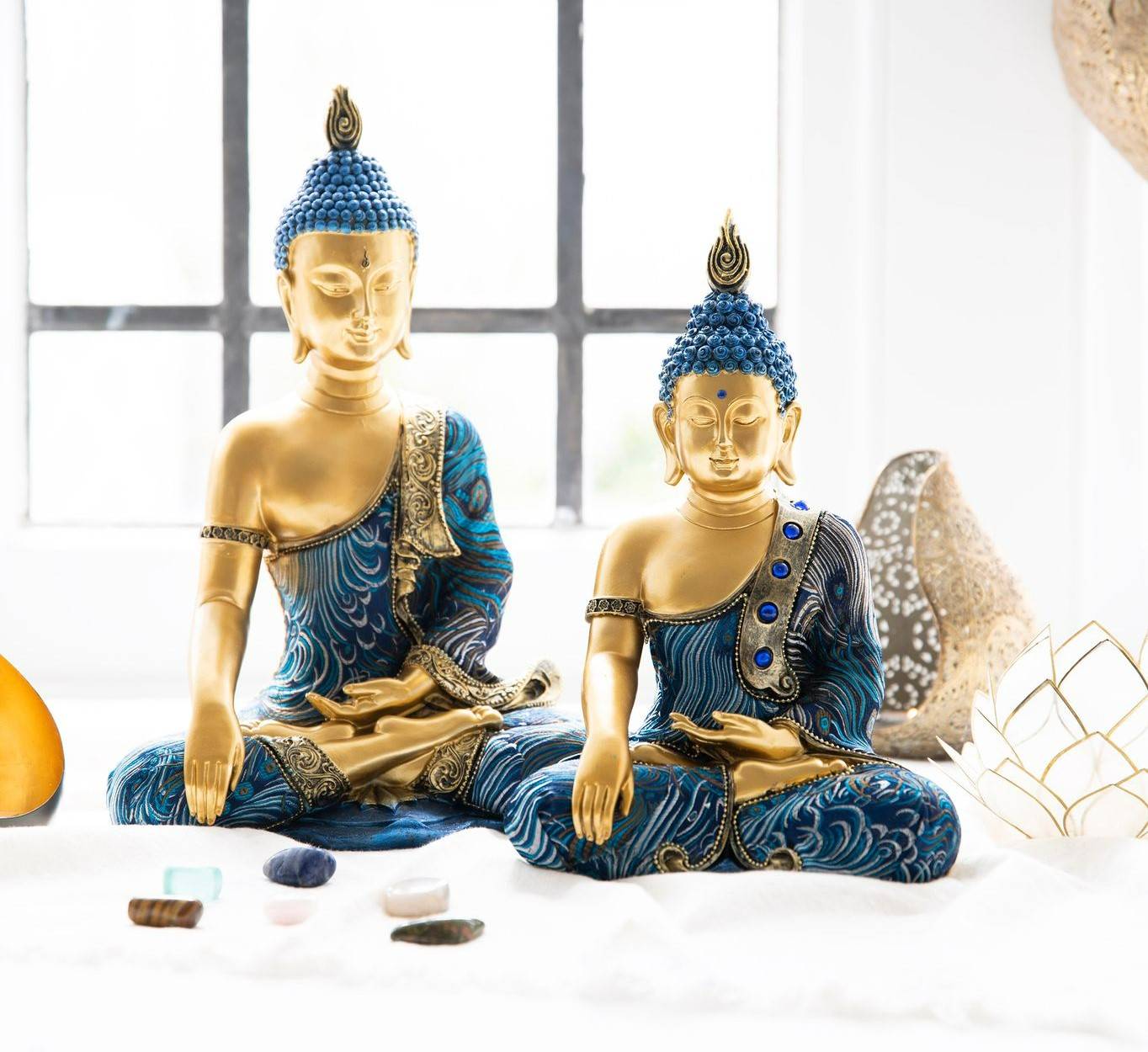
Buddha sitting with hands in lap
This statue represents the moment of enlightenment for Buddha and how, after six years, overcame fear and called upon the Earth goddess to witness that he had achieved his enlightenment that would be shared with the rest of the world. This Buddha statue, with legs crossed, left hand in lap and the right hand pointing to the ground with the palm facing inward toward the buddha – signifies a connection the Earth, that everything is connected and forms part of a greater collective.

Buddha sitting with one hand raised facing outwards
This Buddha statue with the right hand raised and facing outwards this pose, or Asana, symbolises a shield; it is said that when placed at the front door of the home it can block negativity from entering and is a powerful feng shui décor addition to any home. It also represents fearlessness, encouraging one to reject fear, anger and negativity; bringing a sense of protection, peace and deep inner security.
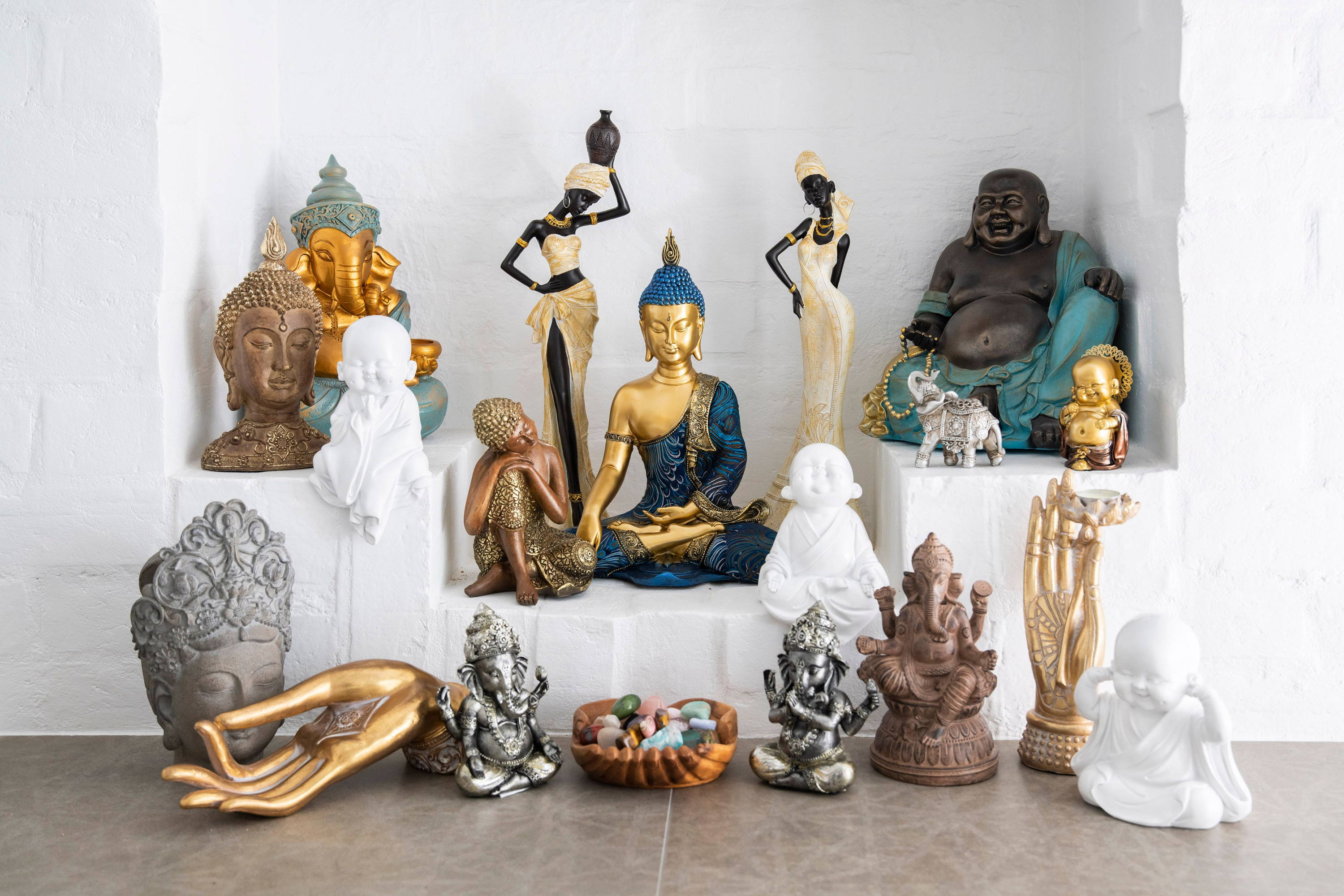

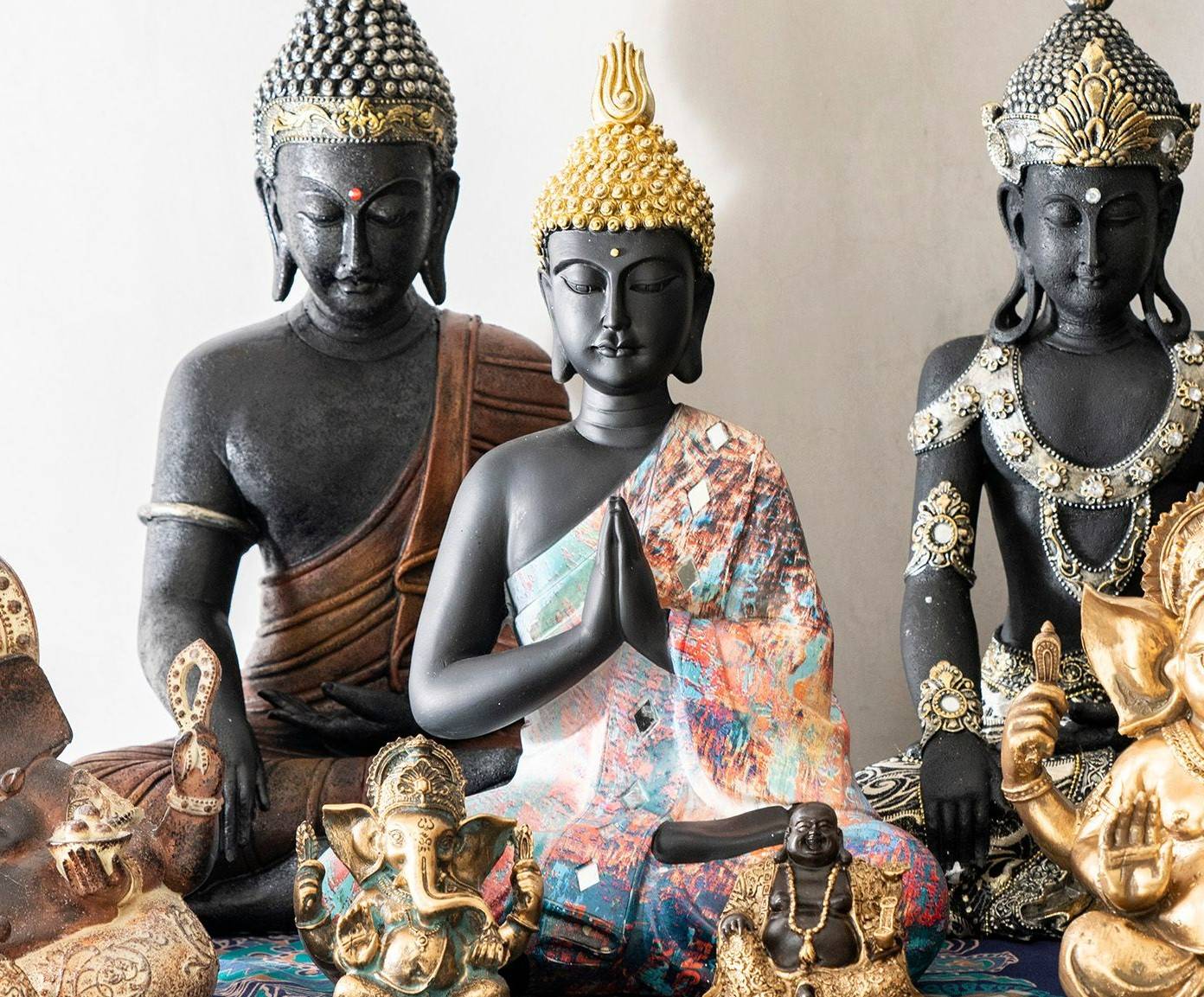
Buddha sitting with hands together in prayer
This statue depicts the gesture of prayer, greeting and adoration and is when both hands are held together at the heart chakra. Bringing calm and serenity, this statue reminds us to make time and welcome in moments of reflection, meditation and peace.

Happy, smiling buddha
This statue of laughing Buddha symbolises happiness, wealth and blessings and when placed in the home is believed to bring abundance. Often depicted with lucky symbols such as the prayer beads, this laughing Buddha also brings harmony and joy. This statue can be placed in the home, specifically in the wealth corner according to feng shui practices or in a home office to bring good fortune and success to business ventures. This laughing buddha statue can be placed indoors or outdoors and according to legend, if you rub the laughing buddha’s belly, it brings forth good luck and prosperity.
